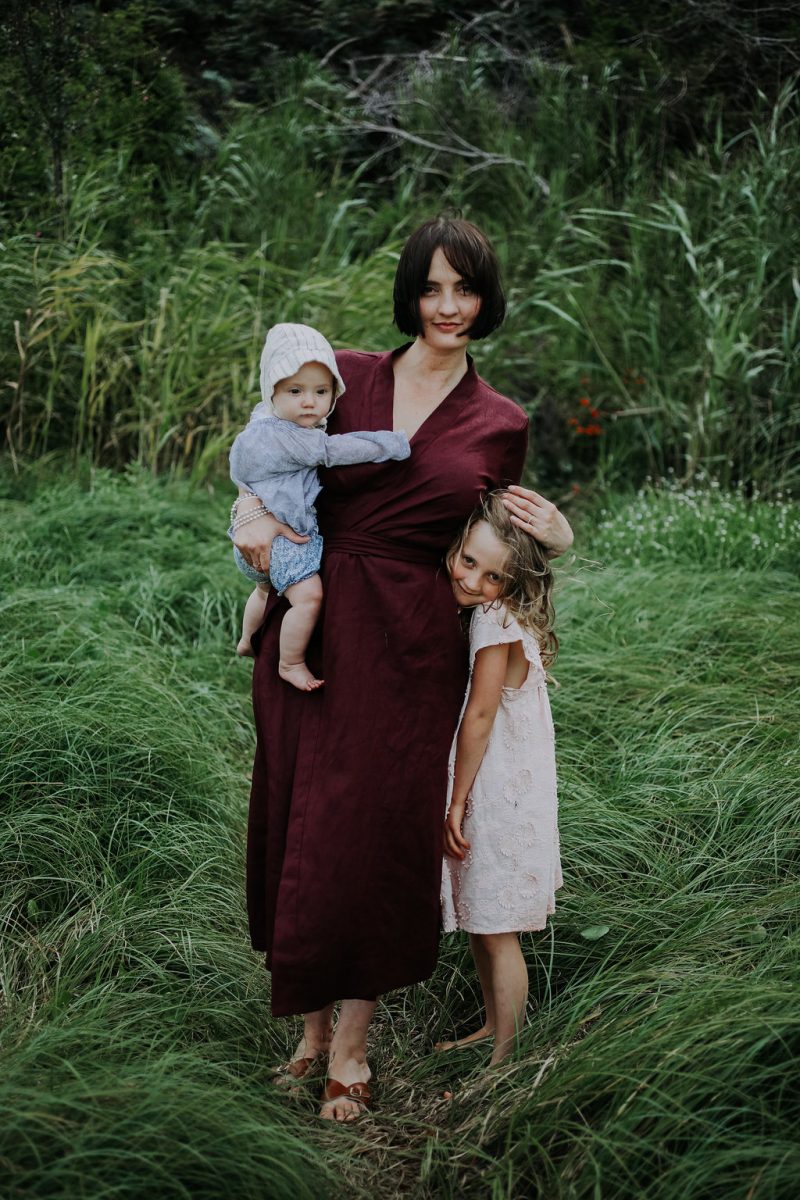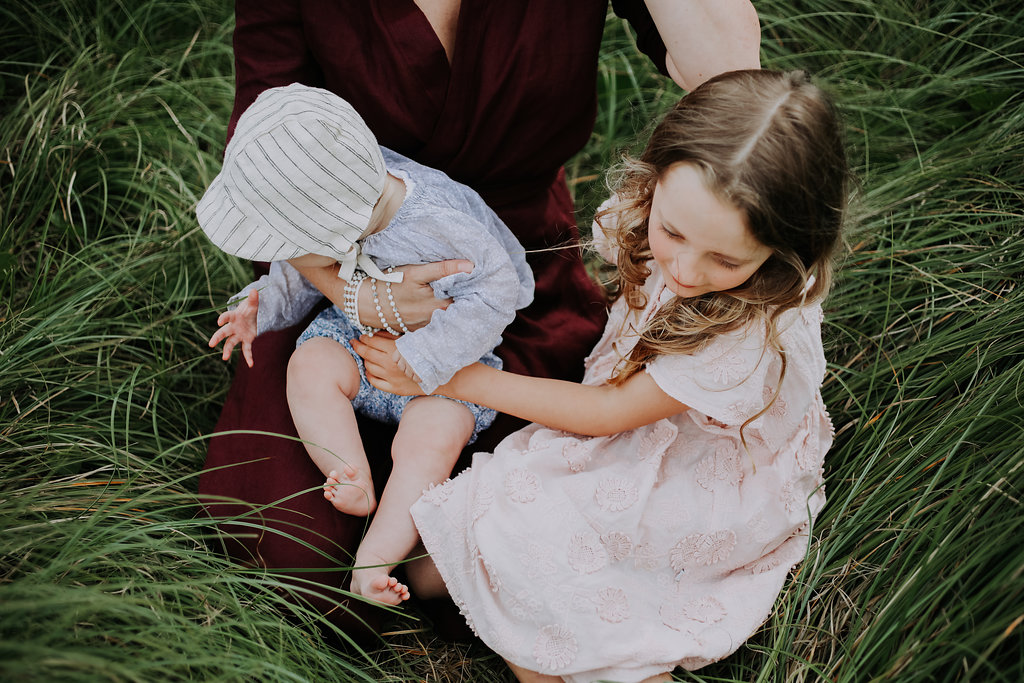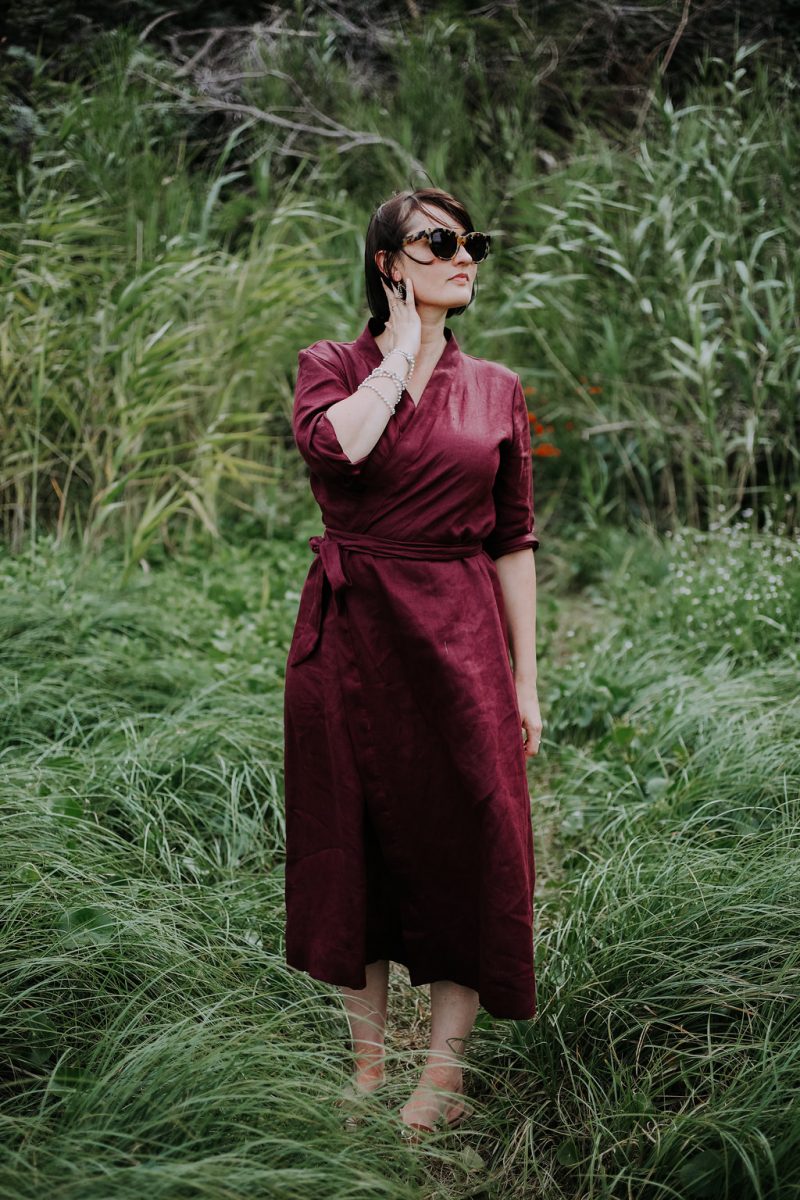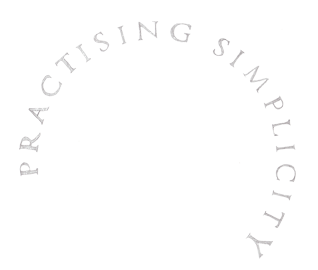thoughts on ethical fashion

I wear the Danny Dress by zino ama (gifted) / Poet wears Pippa Dress by fabrik / Marigold wears Tortoise and the Hare cap, Printebebe smock and Wattle Bloomers
I don’t think we can ignore the fact that fast fashion is an exploitive and environmentally detrimental business. Statistics show that we’re buying and subsequently discarding more clothes than ever before.
Australians throw away six tonnes of clothing every ten minutes. Once in landfill, fabrics like polyester and lycra (hello, activewear!) can take up to 200 years to decompose, releasing harmful methane gas in the process. Entire waterways in Asia are blue because of the excess dye leaching from denim manufacturers. These fast fashion clothes are made by underpaid labourers who work in awful conditions. There is a multitude of ethical and environmental problems with this scenario. It is, most definitely, an eco-crisis.
Social media has worked wonders for prompting transparency in the fashion industry. Hence I’ve been reading up on everything #ethicalfashion of late, a natural progression from my research on single-use plastic and food waste.
And so here I am, more intent than ever to purchase #clothingwithaconscience, take care of every item in my wardrobe and ultimately lessen my fashion footprint.
But it’s not necessarily easy, is it? And the social media that brings the reality of fast fashion to the forefront is also tempting us with page upon page of beautiful, ethical clothes. Alas, it’s all about priorities and, most importantly, choices.
We can choose how and where we spend our money.


FASHION CHOICE
Fashion has become so accessible that it’s often more convenient to discard the old and buy the new. Indeed, it’s hard to justify the time and energy required to mend a piece of clothing when something new requires so little money and effort.
I suppose the question is; what is the environmental cost of this accessibility and convenience?
Personally, I know how good it feels to discover something beautiful in the racks of an op-shop or the pile of pre-loved at a car boot sale. Found, treasured items are exciting and rewarding because they’re unique; because of this we’re more likely to take care of them.
The same awareness applies to clothes that are pondered over and saved up for. They are coveted and cared for because of the thought and effort that went into acquiring them.
Right now, as we take small steps to prepare for caravan life, I’m culling my clothes and creating a capsule wardrobe – for the very first time! At this stage of my life I’ve found it more challenging than ever to find clothes that I love. Or perhaps I just find it hard to find breastfeeding-friendly clothes that are flattering on a shapely, mum-tum body.* Regardless, I’m conscious of only buying what I adore and what I know I’ll wear. Quality wins over quantity – always.
If you’re thinking of doing the same and ultimately being a slow fashion lover, as Zino Ama so wonderfully puts it, you might find inspiration and encouragement over on instagram. I’m particularly loving:
- @zino.ama
- @fash_rev_ausnz
- @ethicalfashion_au
- @fabrikstore
- @urban.granola
- @pyneandsmithclothiers
- @bezerowastegirl
If you would like to delve into some fashionable reading matter, I highly recommend Clare Press’ Wardrobe Crisis. She is currently working on a new book and shares her thoughts over on instagram at @mrspress.
And for those seeking guidance on creating a seasonal, capsule wardrobe, I’m loving everything shared by The Garment (also here: @thegarmentlife).
I wholeheartedly understand that buying ethical fashion requires more money. And I’m here to tell you that I, along with many of you, often don’t have the budget for such purchases. But I do have the awareness and the intention to, as Vivienne Westwood said: “Buy less, choose well, make it last.”
And so if you want to wear #clothingwithaconscience and ultimately be more mindful of the clothes you buy, wear, mend and hand down, a few suggestions for you:
- the pre-loved market is BIG! Ebay, etsy and instagram are abound with quality second-hand clothes.
- look for natural fabrics that will stand the test of time.
- find a local seamstress who can help you when adjusting and mending is required.
- if you’re buying for your kids, look for unisex fabrics and styles than can be passed down.
- think layering and trans-seasonal when you are buying something new.
- don’t get too caught up in the fast fashion trends; instead opt for the classics.
Kesh from zino ama has kindly offered a 25% discount to my readers, enter code JODI25 at checkout.
*the four dresses I’m wearing on high rotation, including the Danny Dress featured above are: Isla Dress, Pintuck Shirt Dress and a button-down linen frock by Pyne & Smith.




Thank you Jodi this was so inspiring to me. I am interested about the capsule wardrobe. Could you share more about this at some point. I would like to do this but I am not sure where to start.
Love clothing by Zino Ama. I also came accross LinenMe (https://www.linenme.com/linen-clothes) Inga’s slow fashion clothing is in the list of my favourites as well.